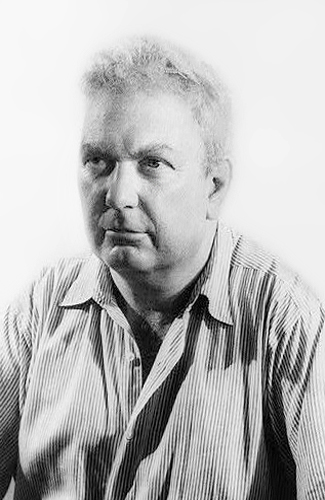
Alexander Calder
Alexander Calder, a visionary American artist, revolutionized the art world with his groundbreaking invention of the mobile, a type of kinetic sculpture that gracefully moves in response to air currents.
Biography of Alexander Calder
Alexander Calder, born in 1898, was the second child of a renowned sculptor and a talented painter. Growing up in a family immersed in the arts, he was exposed to creativity from a young age. His father's public commissions led the family to travel extensively during his childhood, providing young artist with a diverse range of experiences and inspiration.
Even as a child, Calder demonstrated a natural talent for art. At the age of eight, he presented his parents with two intricate sculptures - a dog and a duck - crafted from a brass sheet and bent into shape. Notably, the duck was kinetic, rocking back and forth when tapped, revealing his early fascination with movement and interaction.
After completing his studies in engineering at Stevens Institute of Technology, he turned his attention to the arts, enrolling at the Art Students League in New York City. There, he honed his skills under the guidance of influential instructors and gained valuable experience working for the National Police Gazette. In the summer of 1916, Alexander Calder attended the Plattsburgh Civilian Military Training Camp, where he gained valuable military experience and insights.
In 1926, Calder made the pivotal decision to move to Paris, where he immersed himself in the vibrant artistic scene. He studied at the prestigious Académie de la Grande Chaumière and forged connections with prominent artists like Fernand Léger, Jean Arp, and Marcel Duchamp.
Calder's early artistic explorations focused on wire sculptures and circus figures, drawing inspiration from the abstract and geometric forms he encountered in the Parisian art world. His innovative approach to sculpture culminated in the creation of mobiles, kinetic sculptures that gracefully move and change shape in response to air currents. This groundbreaking invention solidified his reputation as a pioneer of modern art.
In 1933, Calder and Louisa returned to the United States and settled in Roxbury, Connecticut, where they purchased an old farmhouse. The artist converted an attached icehouse into his studio, creating a space conducive to his artistic pursuits. His artistic career continued to flourish during this period. He began representing his work through the Pierre Matisse Gallery in New York in 1934, with James Johnson Sweeney, a close friend, writing the preface for his first show's catalogue. Additionally, Calder's talents extended beyond sculpture, as he designed sets for ballets by Martha Graham and Erik Satie and continued to perform with his Cirque Calder.
Alexander Calder's Art Style
Calder's artistic journey began with an exploration of abstract and geometric forms, leading him to create wire sculptures and circus figures in the 1920s. His groundbreaking innovation came in the 1930s with the development of mobile kinetic sculptures that gracefully move and change shape in response to air currents. These captivating works combined the principles of abstract form with the dynamic energy of the natural world, establishing Calder as a pioneer in the field of kinetic art.
Beyond his mobiles, Alexander's artistic repertoire included paintings, prints, and tapestries. His playful and whimsical approach to art was evident in all his creations. He also delved into the medium of printmaking, producing illustrations for books and journals.
Calder's artistic vision extended beyond the confines of the studio, as he began experimenting with large-scale outdoor sculptures in the 1930s. These monumental works, such as "Devil Fish" and "Big Bird," showcased his ability to create dynamic and engaging sculptures on a grand scale. His commitment to public art was further exemplified by his commissions for the Mercury Fountain at the Spanish Pavilion of the Parisian World Fair and "Lobster Trap and Fish Tail" at the Museum of Modern Art.
During World War II, Alexander Calder's artistic practice adapted to the challenges of the time. With metal in short supply, he turned to wood as a sculptural medium, creating works he and his contemporaries referred to as "Constellations." These pieces, characterized by their intricate interplay of carved wood and wire, further demonstrated Calder's versatility and innovative spirit.
Years:
Born in 1898
Country:
United States of America, New York
Gallery:
Van de Weghe
Landau Fine Art
Helly Nahmad Gallery
Galerie Karsten Greve
Vedovi Gallery